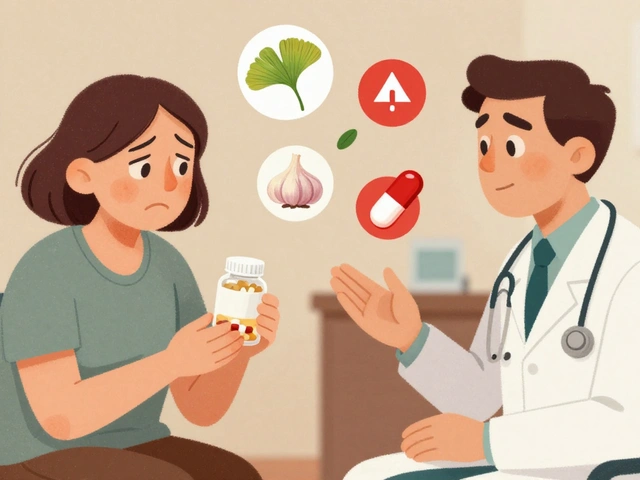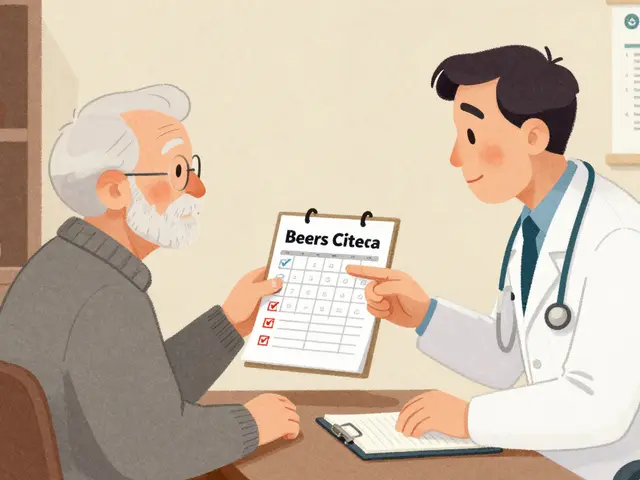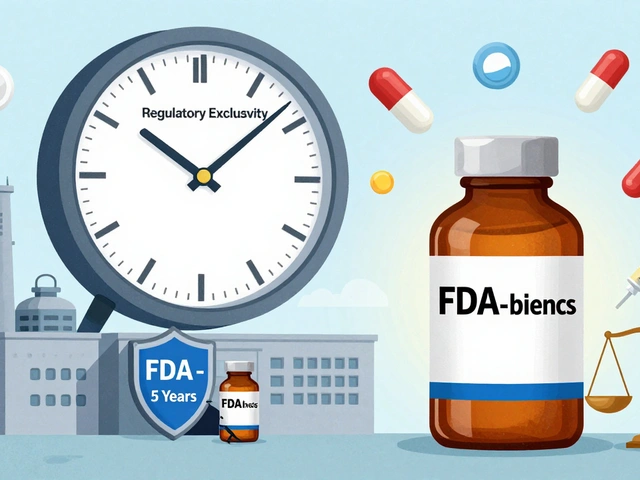You want relief from stubborn heartburn without paying brand-name prices or wasting time. Fair. The catch? Proton pump inhibitors like omeprazole (the generic of Prilosec) are cheap and easy to find online, but the internet also has sketchy sellers, mixed product names, and confusing rules-especially in the UK. Here’s the no-nonsense guide to what you’re actually buying, the prices you should expect in August 2025, how to shop safely, and how to use it right so you get results without headaches.
Quick note on names: “Prilosec” is the US brand. In the UK, the generic is omeprazole and the well-known brand is Losec. Same active ingredient. If your plan is to buy generic omeprazole online, you’re in the right place.
What you came here to do, in plain terms:
- Check if omeprazole is the right product for your symptoms and when it actually helps.
- Find safe UK online options and spot the red flags fast.
- Know fair prices for 10 mg and 20 mg so you don’t overpay.
- Understand how to take it, how long to try it, and when to stop.
- Avoid common pitfalls: fake sites, wrong strength, stacking with meds that clash.
What you’re buying, who it’s for, and the basics that save you money
Omeprazole is a proton pump inhibitor (PPI). It reduces stomach acid at the source. It’s useful for frequent heartburn, acid reflux (GORD/GERD), and related symptoms like sour taste and nighttime burning. Unlike antacids, it doesn’t work right away; it builds effect over 1-4 days. That’s normal. NHS guidance notes it can take a few days to feel the full benefit, which is why most OTC packs are sold for a 14‑day course.
In the UK, lower strengths of omeprazole are a “pharmacy” medicine. That means you can buy them without a prescription, but a pharmacist should check it’s appropriate. Online, legit sellers do a short health questionnaire before checkout. If a site skips that entirely, be cautious.
Common strengths and what they mean for you:
- 10 mg: Light touch. Good if your symptoms are mild or occasional.
- 20 mg: The standard OTC dose for frequent heartburn. Most people start here for a 14‑day trial.
- 40 mg: Prescription‑only in the UK. If you see 40 mg OTC from a UK site, that’s a red flag.
Who it’s for: Adults 18+. If you’re pregnant or breastfeeding, the NHS generally considers omeprazole compatible, but you should still check with your GP or pharmacist first. If you have alarm symptoms-like trouble swallowing, unexplained weight loss, vomiting blood, or black stools-skip DIY treatment and get urgent medical help.
How to take it for best effect:
- Take your daily dose in the morning, 30-60 minutes before food. Consistency beats timing perfection.
- Don’t chase immediate relief-pair with an antacid or alginate (e.g., Gaviscon) for breakthrough symptoms in the first few days if needed.
- Aim for a short, fixed course (14 days). If you need repeat courses often, you may need a GP review. NICE guidance for dyspepsia and reflux supports stepping down or stopping once controlled.
Big reason people overspend: buying brand names out of habit. Generics contain the same active ingredient and work the same for most people. The difference is often the coating or capsule type, not the acid control.
When to consider alternatives instead of omeprazole:
- If you want “as needed” relief with faster onset: alginates or antacids.
- If you only get night‑time symptoms: adding an alginate at night can help.
- If you don’t respond to omeprazole after 2 weeks: your GP may try a different PPI (e.g., lansoprazole) or look for other causes.
Known interactions and cautions worth checking before you order:
- Clopidogrel: Omeprazole can reduce its effectiveness (CYP2C19 interaction). Ask your GP or pharmacist.
- Warfarin, phenytoin, diazepam: Can affect levels-monitoring or alternatives may be needed.
- High‑dose methotrexate: Omeprazole can increase methotrexate levels.
- Low magnesium risk with long‑term PPI use; short courses are low risk, but report muscle cramps or palpitations.
Side effects to watch for (usually mild): headache, nausea, tummy cramps, diarrhoea or constipation. Serious side effects are rare on short courses. If you get persistent symptoms or anything that feels off, stop and speak to a clinician.

Prices, safe UK buying, and how to spot a legit online pharmacy
You came for price clarity. Here’s what UK shoppers typically see in August 2025 for generic omeprazole online. Prices vary by pack size, brand, and delivery, but these ranges are realistic for licensed UK sellers.
| Product | Strength | Pack size | Typical UK online price (Aug 2025) | Price per tablet | Notes |
|---|---|---|---|---|---|
| Omeprazole (generic) | 10 mg | 14 tablets | £2.50-£6 | £0.18-£0.43 | Light dose; often cheapest option |
| Omeprazole (generic) | 20 mg | 14 tablets | £3.50-£9 | £0.25-£0.64 | Standard OTC course |
| Omeprazole (generic) | 20 mg | 28 tablets | £5.50-£15 | £0.20-£0.54 | Best unit price; check expiry date |
| Losec (brand) | 20 mg | 14 tablets | £9-£16 | £0.64-£1.14 | Brand premium; same active ingredient |
| Prilosec (US brand) | 20 mg | Imported packs | Varies; often higher | - | Import can face customs; avoid non‑UK sites |
Heuristics to avoid overpaying:
- Target £3.50-£9 for a 14‑tablet 20 mg generic pack, plus £0-£3 for standard delivery.
- Multi‑packs cut per‑tablet cost, but only buy what you’ll use in 6-12 months.
- Enter coupon codes only if the site is legit; don’t chase unknown discount sites for medicines.
What a legitimate UK online pharmacy looks like in 2025:
- On the MHRA register of UK medicine sellers (post‑Brexit, the old EU logo no longer applies in Great Britain). Northern Ireland may still display the EU common logo.
- GPhC‑registered pharmacy with a visible registration number and superintendent pharmacist name.
- A UK physical premises listed on their site, clear customer support hours, and a pharmacist contact method.
- A brief health questionnaire at checkout (age, symptoms, red flags, current meds).
- Secure checkout (https), clear returns/refund policy, and realistic delivery windows (24-72 hours standard within the UK).
Red flags that save you grief:
- Selling 40 mg omeprazole OTC without a prescription.
- No pharmacist oversight, no questionnaire, or they push you to “bulk buy” inappropriate strengths.
- Prices that look too good to be true (e.g., pennies per tablet with free international shipping).
- No UK address, unclear company name, or mismatched domain and company details.
- They ship from outside the UK without saying so; customs seizures are your problem, not theirs.
Delivery notes that matter:
- Omeprazole doesn’t need cold‑chain shipping; standard tracked delivery is fine.
- Most UK pharmacies deliver next day if you order before early afternoon; weekend dispatch varies.
- Keep original packaging for batch number and expiry-important if you ever need to report a quality issue to the MHRA.
Privacy and returns:
- By law, pharmacies often can’t accept returned medicines for reuse once they leave the premises. Refunds usually apply only if damaged, faulty, or not as described.
- Check if the site separates medical data from marketing. You should be able to opt out of promotional emails.
Simple price‑check workflow before you click buy:
- Search for “omeprazole 20 mg 14 tablets generic”.
- Open 3-5 UK pharmacy tabs. Confirm GPhC registration and MHRA listing.
- Compare total cost: item + delivery + any consultation fee.
- Pick the site with clear policies and a fair price band (from the table above).
- Complete the health questionnaire honestly to avoid delays.

Use it right: dose, risks, alternatives, FAQs, and next steps
How to dose:
- Start: 20 mg once daily, 30-60 minutes before breakfast, for 14 days.
- If symptoms are very mild, 10 mg can be enough. If you need 20 mg twice daily, that’s a prescription‑level dose-speak to your GP.
- Don’t crush delayed‑release tablets or open enteric capsules unless a pharmacist says it’s okay for your specific product.
What to expect and how to judge if it’s working:
- Day 1-2: Not much change. Use an alginate for breakthrough relief.
- Day 3-4: Noticeably fewer symptoms, especially overnight.
- Day 7: You should see clear improvement. If not, confirm you’re taking it before food.
- Day 14: Stop. If heartburn returns quickly and often, book a GP review.
Food and lifestyle tweaks that actually move the needle:
- Keep late‑night meals light; leave 3 hours before bed.
- Raise the head of your bed 10-15 cm if night reflux is a thing.
- Go easy on alcohol, coffee, high‑fat meals, peppermint, and large portions.
- Nicotine relaxes the lower oesophageal sphincter; cutting down helps.
Alternatives and how they stack up:
- Lansoprazole: Another PPI. Similar price and effect. Some people respond better to it than omeprazole.
- Esomeprazole: Often pricier; may be used if others fail. Interacts with clopidogrel too.
- H2 blockers (e.g., famotidine): Work faster than PPIs, but effect can fade with daily use. Useful for occasional or night‑time symptoms.
- Alginates/antacids: Quick relief; pair with a PPI during the first few days of treatment.
When to see a clinician instead of self‑treating:
- New or persistent symptoms after 14 days of correct use.
- Alarm symptoms: trouble swallowing, choking, unexplained weight loss, persistent vomiting, vomiting blood, black or tarry stools, severe chest pain.
- Age 55+ with new onset dyspepsia/reflux, iron‑deficiency anaemia, or family history of upper GI cancer.
- You’re on clopidogrel, warfarin, or other interacting medicines.
FAQ
- Is Prilosec the same as omeprazole? Yes, Prilosec is a US brand name. In the UK you’ll usually see “omeprazole” or the brand “Losec”. Same active ingredient.
- How fast does omeprazole work? You can feel some benefit after 24-48 hours, but full effect may take 2-4 days.
- Can I take omeprazole with antacids? Yes. Use antacids or alginates for breakthrough symptoms. Take them at a different time if possible.
- Is 40 mg available OTC? No. 40 mg is prescription‑only in the UK.
- Is it safe in pregnancy or breastfeeding? Omeprazole is commonly used and considered compatible, but always confirm with your GP or midwife before starting.
- What if I miss a dose? Take it when you remember unless it’s close to the next dose. Don’t double up.
- Can I drink alcohol? Moderate alcohol can worsen reflux. Omeprazole doesn’t block the alcohol itself, but reducing alcohol often improves symptoms.
- Long‑term risks? Most concerns (like low magnesium, B12, or fracture risk) relate to long‑term use. Short 14‑day OTC courses carry low risk.
- Will coffee kill its effect? Coffee can trigger reflux in some people. Omeprazole still works, but you may get better results if you cut back during the 14‑day course.
- Can I import Prilosec from abroad? Don’t. Stick to UK‑registered sellers to avoid customs issues and quality risks.
Risks and mitigations in one place:
- Counterfeits: Buy only from GPhC‑registered pharmacies listed with the MHRA.
- Dose errors: Start at 20 mg once daily. Don’t self‑escalate to 40 mg without medical advice.
- Interactions: If you’re on clopidogrel, warfarin, phenytoin, diazepam, or high‑dose methotrexate, ask a professional first.
- Masking symptoms: If pain is severe or you have alarms, seek care-don’t cover it with a PPI.
Quick chooser (rule of thumb):
- Mild daytime heartburn a few days a week: Try 10-20 mg omeprazole for up to 14 days.
- Night‑time reflux: 20 mg in the morning + alginate at bedtime.
- No improvement after 7 days of correct use: Confirm timing; if still no change by day 14, book a GP review.
Clear, ethical call to action:
- Choose a UK GPhC‑registered online pharmacy.
- Pick omeprazole 20 mg, 14 tablets, in the £3.50-£9 range.
- Complete the health questionnaire honestly.
- Set a 14‑day reminder to stop and reassess.
Next steps and troubleshooting for different scenarios
- First‑time buyer: Start with a single 14‑tablet pack. Keep your order confirmation and batch number. If it works, you’ll know what to reorder.
- Returning buyer: If symptoms come back after weeks or months, another 14‑day course is reasonable. If you need frequent repeats, plan a GP check.
- On clopidogrel or warfarin: Speak to your GP or pharmacist before buying. They may advise a different approach or monitoring.
- Older adult (55+): New symptoms need evaluation. Don’t rely on OTC treatment without a check‑in with your GP.
- Pregnant or breastfeeding: Ask your midwife or GP first; many people use PPIs safely, but confirmation is smart.
- Severe reflux at night: Combine morning omeprazole with a bedtime alginate. Raise the bed head. Review heavy evening meals.
- IBS vs reflux confusion: If bloating and bowel changes dominate, an IBS‑focused plan may help more. Your GP can help separate the two.
Credibility notes:
- NHS: Patient advice confirms omeprazole’s onset, dosing, and common side effects.
- MHRA: Regulates UK online sales of medicines; maintains a register of online sellers.
- GPhC: Registers UK pharmacies and superintendent pharmacists.
- NICE guidance on dyspepsia and reflux: supports step‑down/stop once symptoms are controlled and prompts review with alarm features.
One last tip from real life: symptoms often dip around day 3. Don’t judge the medicine on day 1. Give it the full 14‑day run, then step back and see the pattern. If Luna (my cat) wakes me at 5 a.m., it’s coffee I blame-not the omeprazole.
This article is for general information. It’s not a substitute for personal medical advice.







14 Comments
Cynthia Petersen August 22, 2025
Great practical checklist for buying omeprazole in the UK, especially the MHRA/GPhC bits - those are the real lifesavers when shopping online.
Spot the pharmacy registration first, compare total price (item plus delivery), and always complete the short health questionnaire honestly so orders don't get delayed. Keep the pack and batch number in case anything smells off later, and pair the first few days with an alginate for faster relief while the PPI kicks in.
Karen Richardson August 24, 2025
Do not confuse brand names and generics when checking expiry dates and batch numbers.
Generics contain the same active ingredient, so focus on the manufacturer and the expiry, not the branding. If a site advertises 40 mg OTC in the UK, that single detail is sufficient cause to abandon that checkout immediately. Keep receipts and screenshots of the pharmacy page if you ever need to report a faulty product to the MHRA. Read the small print about returns, since most pharmacies cannot accept opened medicines back.
Tarun Rajput August 26, 2025
The note about taking omeprazole 30–60 minutes before food is crucial and often overlooked, and it deserves emphasis separate from the rest of the guidance.
Timing affects the hydrogen-potassium ATPase pump activity, and therefore the efficacy of the drug, so a habit of taking it consistently in the morning before breakfast is the simplest clinical advice that yields predictable results for most people. Many users who report 'no effect' after a few days simply take their dose at random times or with meals, which blunts the onset of action. A short bridge strategy using antacids or alginates for breakthrough symptoms during the first 48–72 hours will improve tolerability and perceived benefit while waiting for the PPI to build up its effect.
From a regulatory standpoint, the distinction between pharmacy medicine and prescription-only preparations matters for online purchases: if an online seller offers 40 mg without a prescription and lacks clear pharmacist oversight, it is likely outside the lawful framework and therefore not only risky clinically but also legally jeopardized. Practical advice for buyers includes verifying the superintendent pharmacist details, checking the physical UK address, confirming secure payment methods, and retaining batch information for any pharmacovigilance reporting.
For those on interacting drugs such as clopidogrel or warfarin, the best route is to route the purchase through a community pharmacy where a pharmacist can advise and, if necessary, liaise with the prescriber rather than relying on a faceless discount website. People often underestimate the downstream impacts of drug interactions, particularly with antiplatelet therapies.
Finally, lifestyle measures are not adjunct fluff; they materially change symptom trajectories and can reduce the need for repeated PPI courses. Elevating the bed head, moderating late-night meals, and reducing tobacco and alcohol intake make a measurable difference in nocturnal reflux and overall symptom burden. Combine short, proper PPI courses with lifestyle adjustments and you reduce the probability of becoming reliant on repeated over-the-counter cycles without medical review.
Joe Evans August 29, 2025
I always check the GPhC number before buying, saves me headaches. 👍
Colin Boyd August 31, 2025
Overuse of PPIs is blown out of proportion in many casual conversations, yet that does not mean anyone should be cavalier about taking them without thought.
Short 14‑day courses are sensible for many people with intermittent reflux, but becoming dependent on repeated OTC rounds without investigating root causes is lazy and potentially harmful. It is also worth noting that lifestyle factors play a deterministic role, and no medicine can make up for persistent poor habits that trigger reflux. People looking for a magic fix will be disappointed and may end up on long-term therapy with cumulative risks that they did not anticipate.
Regulatory checks and pharmacy oversight are important, but consumer education matters most: know your meds, know your interactions, and stop assuming that a low price equals harmlessness. A cheap tablet bought from an unknown source is a vector of risk, whether through incorrect dose, contamination, or simply expired batches.
Danielle de Oliveira Rosa September 2, 2025
Agreeing with the harm‑reduction angle here and the emphasis on root causes rather than repetitive self-medication.
It helps to approach symptoms with curiosity instead of panic: track when they happen, note food and sleep patterns, and then use the PPI as a focused tool rather than a permanent crutch. That mindset both protects physical health and reduces the anxiety that comes with chronic symptom flare-ups.
Marcia Hayes September 4, 2025
Short and practical: buy a single 14‑day pack first, test it properly, then reorder only if needed.
That saves money and avoids unused tablets collecting in the medicine cabinet.
AnGeL Zamorano Orozco September 7, 2025
Listen, I've been through so many stupid sites that claim to be pharmacies but ship god knows what, and it's infuriating how many people just grab the cheapest thing and hope for the best.
Those pennies-per-tablet
John Petter September 9, 2025
Rhetoric aside, the practical rules listed here are the only reasonable way to avoid being conned and to ensure clinical safety while buying online.
Stick to registered sellers and be strict about interactions with clopidogrel and anticoagulants because the consequences are real and measurable.
Annie Tian September 11, 2025
Nice checklist of red flags and price heuristics that most people will actually follow.
Adding that anyone on regular meds should print or save the seller's pharmacist contact details before ordering, because a quick pharmacist call can prevent a dangerous interaction and is usually free.
Joe Evans September 14, 2025
Totally, I always screenshot pharmacist contact and order confirmation then set a reminder for day 14, it keeps things tidy and reduces panic lol 🙂
Tarun Rajput September 16, 2025
Emphasising allocated checkpoints and planned reassessment after a 14‑day course is a small behavioural change with disproportionate clinical benefit.
Clinicians are often briefed about the prevalence of over-the-counter use and tend to appreciate a patient who arrives having tried a measured course rather than someone who self-medicates indiscriminately for months. A simple routine - order one pack, start taking at the recommended time, use alginates for the first few days, and then review at day 14 - gives both the patient and the clinician a concrete data point for the next decision.
Operationally, for those who are cautious about interactions: prepare a concise list of current medicines and chronic conditions, save that list as an image or PDF on your phone, and paste it into the pharmacy questionnaire or show it to the pharmacist during a short consultation. Most pharmacies will flag potential interactions, but proactive documentation speeds the process and reduces the likelihood of missed interactions.
From a pharmacological perspective, the mechanism of PPIs requires active proton pumps to be present for binding, which is why dosing before food matters; the greater the parietal cell activity at dosing time, the better the drug can exert its effect during the post-prandial period. A habit-based dosing strategy is therefore pharmacokinetically sensible and clinically pragmatic.
For older adults and those with alarm features, prioritising an in-person GP review over OTC purchases is not merely pedantic - it is a risk mitigation strategy. Alarm symptoms carry a nontrivial pre-test probability for pathology that needs diagnostic workup rather than symptomatic coverage. The narrative that 'PPIs are harmless' contributes to diagnostic delay, which is a public health concern in older cohorts.
Finally, the economic angle is worth reiterating: unit price comparisons should include delivery and any consultation fees. Bulk buying is only sensible if the purchaser can reasonably expect to use the stock within the product's shelf life, and if there is no change in their clinical status that would warrant GP oversight between purchases. Keep the supply chain in mind, and maintain records for any pharmacovigilance reporting should problems arise.
All of the above can be implemented with minimal friction and considerably reduce the chance of adverse outcomes while maximising therapeutic benefit for most users.
Karen Richardson September 18, 2025
Minor wording nitpick to tidy the public guidance so it reads crisply and can't be misinterpreted by readers skimming for actions.
Replace vague phrases like "check expiry" with "confirm expiry date and batch number on the original packaging". Make the red flag line explicit: "Do not buy 40 mg omeprazole without a prescription in the UK." That single edit will stop a lot of accidental rule-breaking by casual buyers. Otherwise, the checklist is very useful.
Colin Boyd September 21, 2025
The suggestion to explicitly prohibit 40 mg OTC is theatrical but justified, and edits that reduce ambiguity are always welcome.